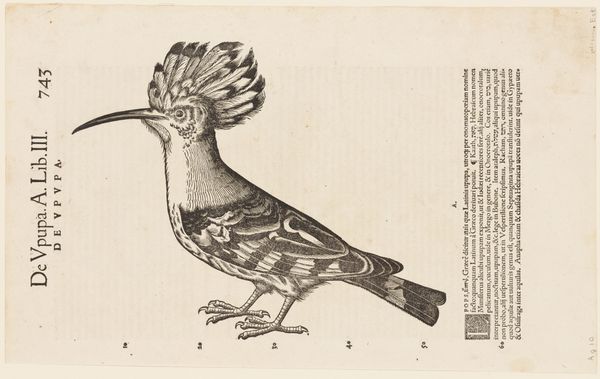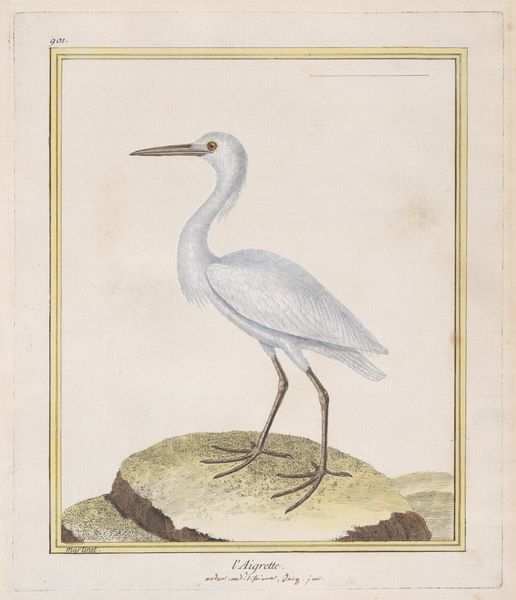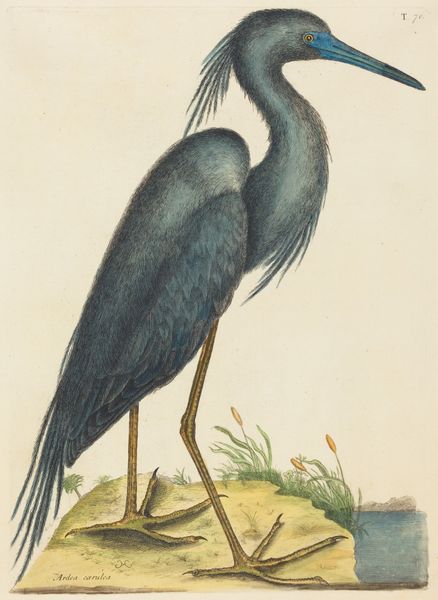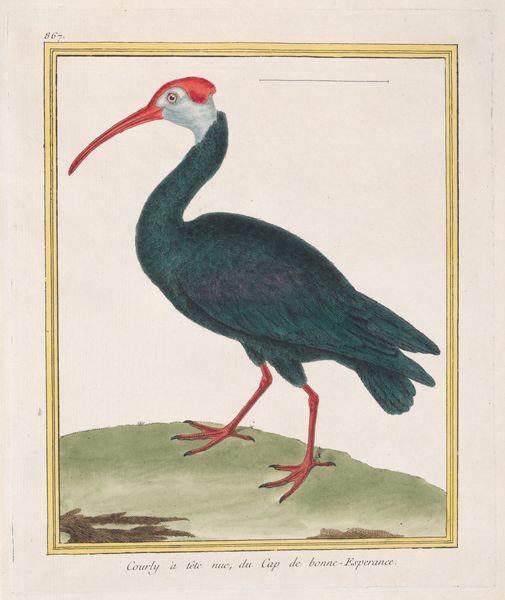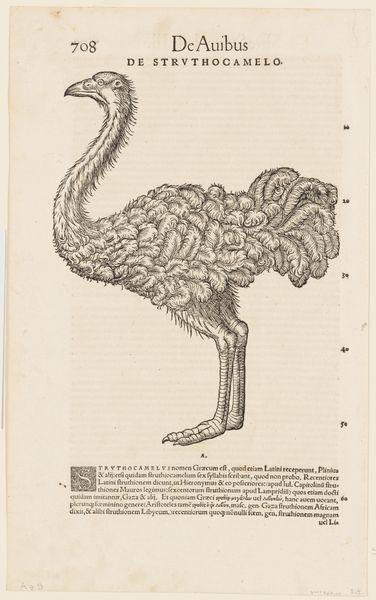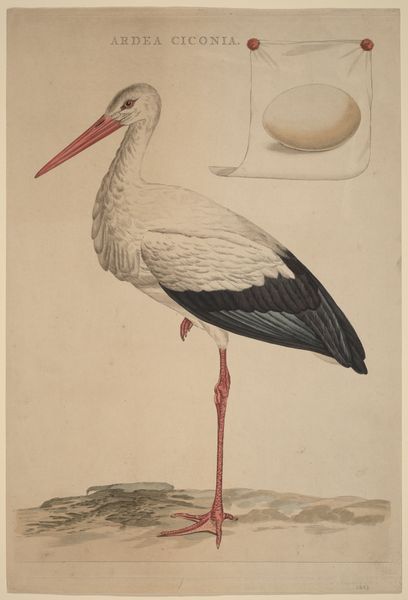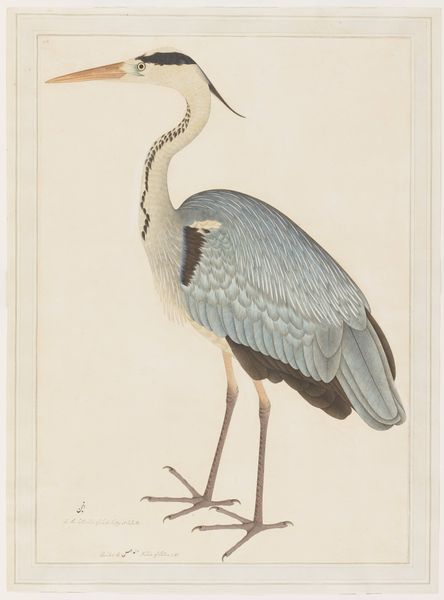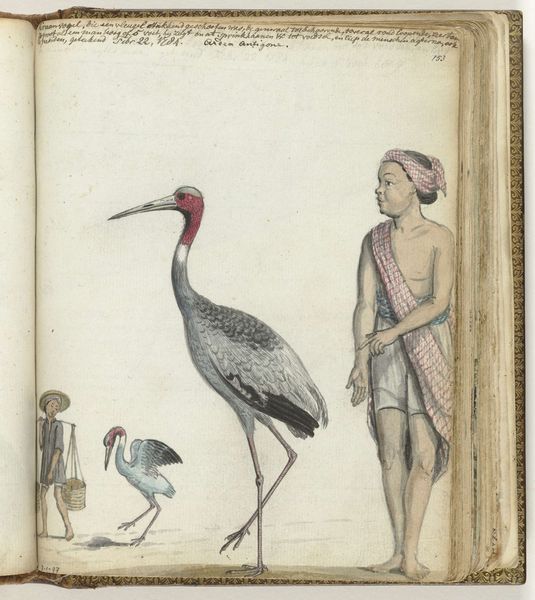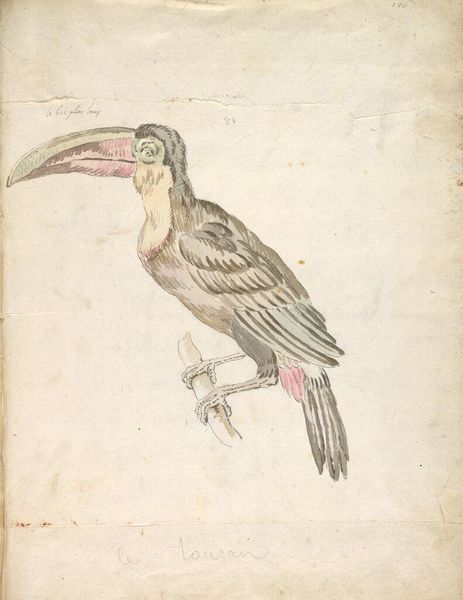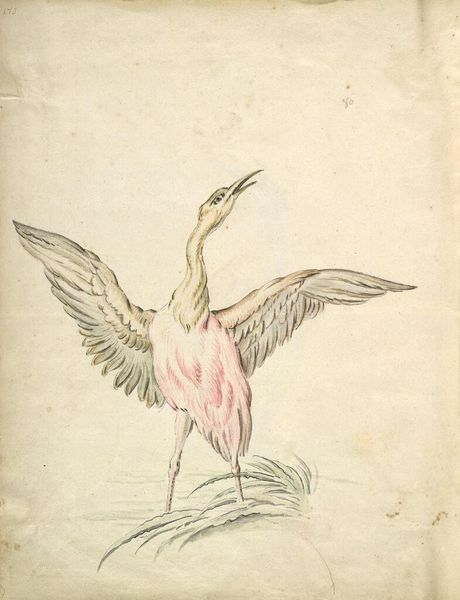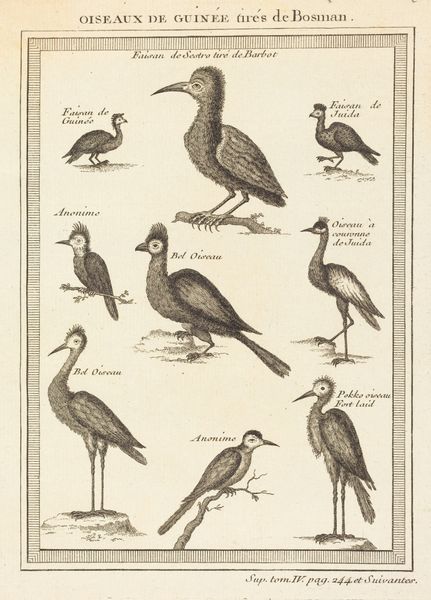
drawing, print, ink, woodcut, engraving
#
drawing
#
medieval
#
narrative-art
# print
#
figuration
#
11_renaissance
#
ink
#
woodcut
#
academic-art
#
engraving
#
realism
Dimensions: 12 x 7 in. (30.48 x 17.78 cm) (image)
Copyright: Public Domain
Curator: We're looking at "De Avibus. Page 212" by Conrad Gesner, dating from between 1551 and 1587. It’s a print combining woodcut and engraving, currently held at the Minneapolis Institute of Art. Editor: The stark, almost clinical quality of the bird’s rendering jumps out. The composition is centered and static, offering little in the way of implied motion or narrative. Curator: Precisely! Notice the intricate details achieved through the cross-hatching. The lines articulate the texture of the feathers and the smooth surface of its beak, but without romanticism. It's an objective study. The measured markings beside the bird invite systematic categorization. Editor: Yet, within this rigid framework, the bird emerges as a figure with considerable symbolic resonance. Birds, universally, connect the earthly and the celestial, flight as aspiration, freedom. Given this comes from a natural history text, are we perhaps seeing more than just avian taxonomy? Curator: Doubtless. Renaissance natural histories often served as symbolic repositories. Consider how Gesner meticulously constructs the bird’s form using visual elements like line and tone to underscore ideas about the natural world. Editor: Absolutely, and the text surrounding the image provides further context—perhaps cues to its symbolic significance, its place in folklore and classical knowledge. Is this heron presented here also meant to represent vigilance or perhaps patience? These qualities, historically linked to herons, might add a layer of meaning to its form. Curator: The piece definitely functions as a window into how people cataloged and understood the natural world. It invites us to consider the frameworks through which they did so. Editor: A reminder that even scientific illustration, striving for objectivity, can’t fully escape cultural and symbolic coding. Thank you, I find myself rethinking these old renderings.
Comments
No comments
Be the first to comment and join the conversation on the ultimate creative platform.
